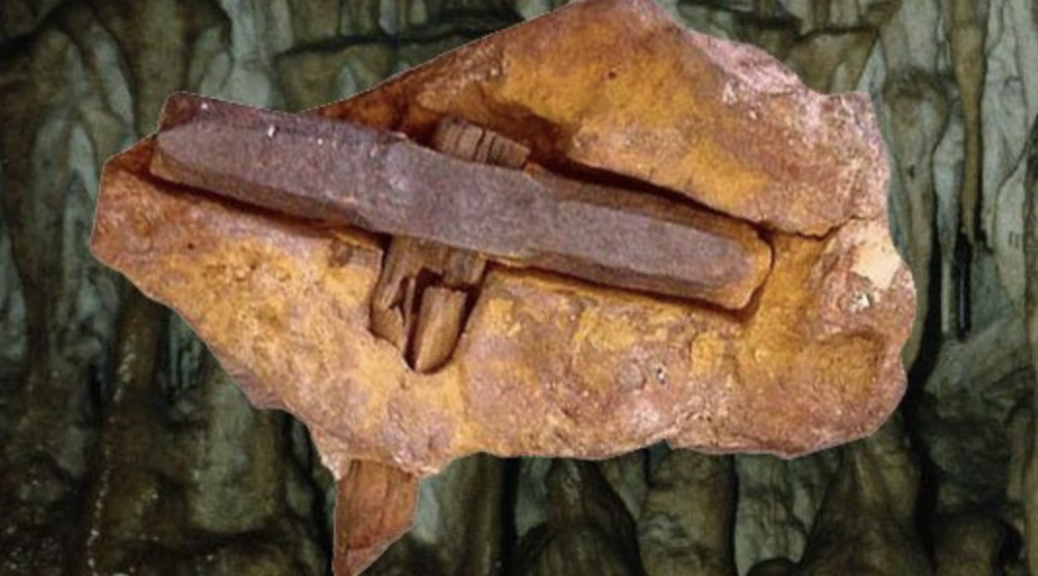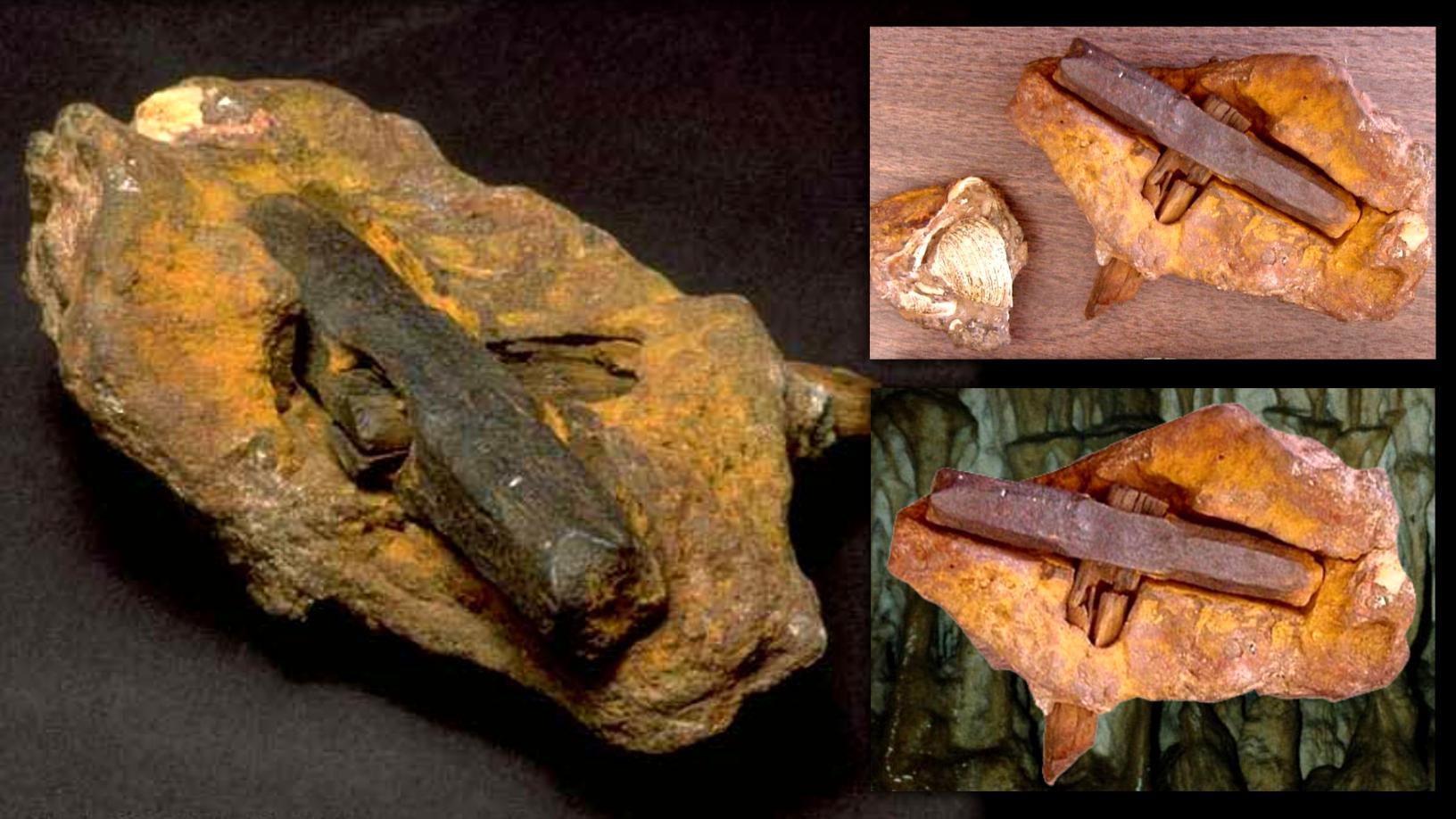The London Hammer is not just any ordinary tool; it is a captivating artifact that has perplexed scientists, historians, and enthusiasts alike. Discovered in 1936 in London, Texas, this hammer has sparked debates about the intersection of technology and ancient history. Its intriguing characteristics challenge the conventional understanding of human development and tool-making throughout the ages. The London Hammer has become a focal point for discussions about the age of artifacts and the possibility of advanced civilizations existing long before known history.
This hammer, encased in a block of limestone estimated to be over 100 million years old, presents a fascinating paradox. How could a man-made object end up in such ancient geological strata? This question lies at the heart of the numerous theories that have arisen around the artifact. Many believe that the hammer is evidence of human existence during a time when dinosaurs roamed the Earth, while others argue that it is merely a modern tool that became inadvertently encased in limestone.
The allure of the London Hammer does not stop at its age; it also raises profound questions about our understanding of history and the evolution of technology. As we delve deeper into the story of the London Hammer, we will explore its discovery, the controversies surrounding it, and its implications for our understanding of the past. Join us as we embark on a journey through time to uncover the secrets of this remarkable tool.
Read also:Engaging Dare Questions The Ultimate Guide For Fun And Connection
What is the History Behind the London Hammer?
The London Hammer was discovered by a couple, Max and Emma Hahn, while they were exploring a limestone formation in London, Texas. During their excursion, they stumbled upon the hammer embedded in the rock, an encounter that would forever change their understanding of history. The Hahns took the hammer home, intrigued by its unusual appearance and weight. They later sought the opinions of local experts, who confirmed that it was indeed a man-made tool.
Who Analyzed the London Hammer?
After its discovery, the London Hammer attracted the attention of various scientists and researchers. Notable among them was Dr. John Whitcomb, a geologist who examined the hammer and confirmed its human craftsmanship. He stated that the hammer was made of iron and had a wooden handle, suggesting that it was used for practical purposes. However, the hammer's placement in limestone raised eyebrows, leading to further investigations by both supporters and skeptics of its authenticity.
What Makes the London Hammer Controversial?
The London Hammer has become a point of contention among archaeologists and historians. Some argue that the hammer is evidence of advanced ancient civilizations, while others believe it to be a hoax or a modern tool that was mistakenly embedded in the limestone. The debate continues as new analyses and theories emerge, often fueled by public fascination with the artifact. Critics claim that the hammer's age has been exaggerated, while supporters maintain that it challenges conventional timelines of human history.
What Are the Scientific Examinations of the London Hammer?
Over the years, the London Hammer has undergone various scientific examinations to determine its age and origin. Techniques such as radiocarbon dating, X-ray diffraction, and chemical analysis have been employed to glean more information about the artifact. Despite these efforts, definitive conclusions about its age and how it came to be encased in limestone remain elusive.
What Is the Composition of the London Hammer?
One of the most intriguing aspects of the London Hammer is its composition. The hammer is primarily made of iron, but it also contains traces of other metals, including nickel and cobalt. This composition is unusual for tools from the era it is purported to be from, leading many to believe that it is a modern creation. However, supporters argue that ancient civilizations may have possessed metallurgy skills that were previously unrecognized.
How Does the London Hammer Challenge Our Understanding of History?
The existence of the London Hammer has prompted a reevaluation of the timeline of human history. If the hammer truly dates back to a time when dinosaurs roamed the Earth, it poses significant questions about human development and technological advancement. Could advanced civilizations have existed much earlier than previously thought? The implications of such a possibility could reshape our understanding of archaeology and history.
Read also:All You Need To Know About Hentia English Dub A Comprehensive Guide
What Are the Implications of the London Hammer for Future Research?
The enigma of the London Hammer continues to inspire curiosity and research. Scholars and enthusiasts alike are motivated to delve deeper into its origins and the broader implications it holds for human history. The ongoing debates surrounding the hammer may lead to new methodologies in archaeology, prompting researchers to explore unconventional theories and embrace interdisciplinary approaches.
Where Can You See the London Hammer Today?
The London Hammer is currently housed at the Creation Evidence Museum in Glen Rose, Texas. Visitors can view the artifact, along with various exhibits that explore the intersection of faith and science. The museum aims to present a narrative that supports the notion of a young Earth and challenges mainstream scientific views.
What Can We Learn from the London Hammer?
The London Hammer serves as a reminder of the complexities of our past. It teaches us that history is not always straightforward and that new discoveries can challenge established narratives. The ongoing intrigue surrounding the London Hammer encourages us to remain open-minded about our understanding of history and the possibility that there may be more to our past than we currently comprehend.
In conclusion, the London Hammer is a fascinating artifact that raises numerous questions about the nature of history, technology, and human civilization. Its discovery in ancient limestone has sparked debates and inspired further research, ensuring that the story of the London Hammer will continue to captivate the imagination of those who seek to unravel the mysteries of our past.


